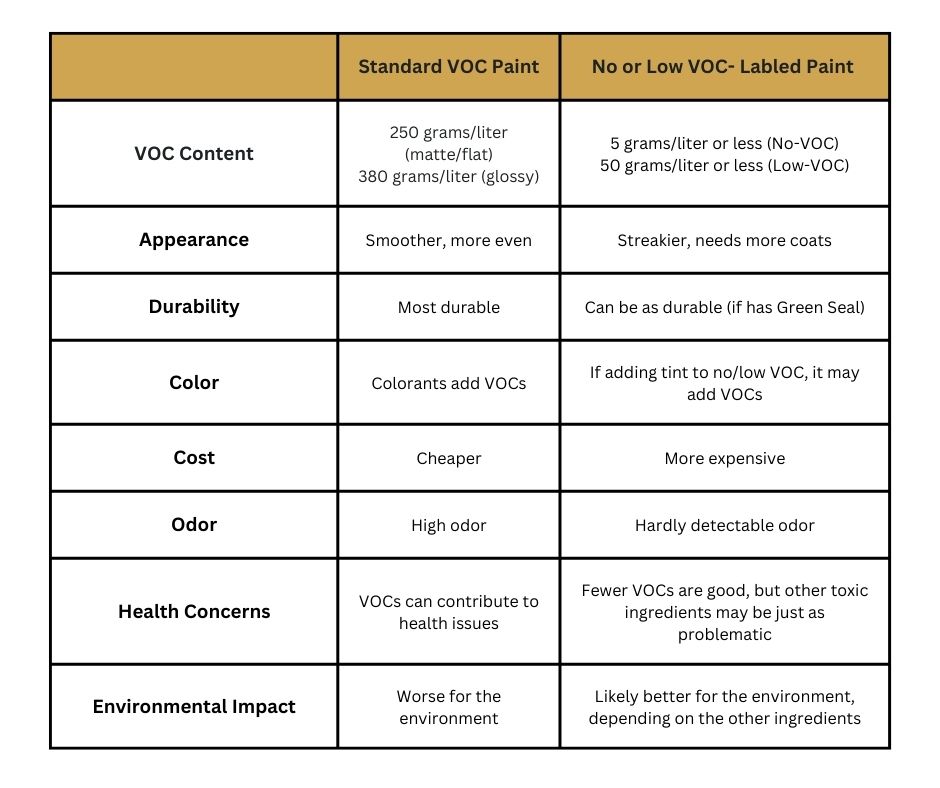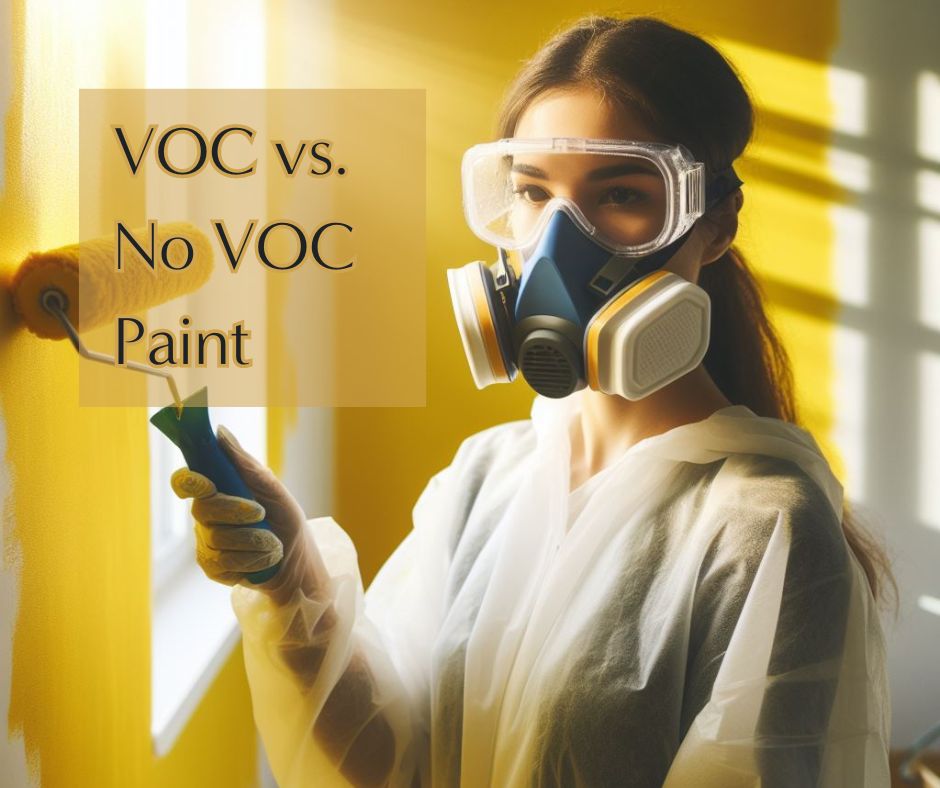VOC vs. No VOC Paint: A Complete Guide
Paints are essential in home improvement and interior design, but the quest for beauty shouldn't compromise our health and planet. With various options on the market, understanding the difference between VOC (volatile organic compounds) paints and non-VOC paints becomes crucial. Here's an insightful guide for eco-conscious homeowners, health-minded individuals, and DIY enthusiasts looking to make an informed choice.
Understanding VOC Paints
What are VOCs? VOCs are chemicals that vaporize at room temperature and can harm health and the environment. They can cause headaches, dizziness, and respiratory problems and contribute to atmospheric pollution.
Sources of VOCs in Paints: Traditional paints include a variety of VOCs from solvents, which help in application and drying. Over time, these can off-gas into the environment, reducing indoor air quality.
VOC Paint Concerns: VOC paints can lead to issues such as Sick Building Syndrome, pollution, and increased ozone depletion.
Introduction to No VOC Paints
What are no-VOC paints?
These paints are designed with minimal volatile organic chemicals, significantly reducing their impact on indoor air quality and the environment.
No VOC Paints vs. Traditional Paints:
Unlike their counterparts, No VOC paints emit low to no harmful gases, offering a safer alternative for indoor environments.
Benefits of No VOC Paints:
There is a marked improvement in air quality, reduced health risks, and environmental pollution.
VOC vs. No VOC Paints Comparison

Health Impacts
- VOC Paints contribute to poor indoor air quality and have potential long-term health repercussions
- No VOC Paints are healthier, especially for those with allergies, asthma, or sensitivities.
Environmental Impacts
- VOC Paints impact the environment through ozone creation and persistent organic pollutants.
- No VOC Paints boast a cleaner production process and less environmental degradation.
Performance and Application
- Durability: Some argue that VOC paints last longer, but non-VOC options are catching up
- Application: Non-VOC paints often require more coats but are more accessible and safer.
Cost Considerations
- VOC Paints contribute to poor indoor air quality and have potential long-term health repercussions
- No VOC Paints are healthier, especially for those with allergies, asthma, or sensitivities.
Top Brands
Benjamin Moore Eco Spec: This premium acrylic paint by Benjamin Moore is known for its eco-friendly features. It offers a range of finishes—flat, eggshell, and semi-gloss—in a variety of colors, all achieved through its innovative Gennex zero-VOC colorant system.
Sherwin Williams Harmony: A top choice, this acrylic latex paint from Sherwin Williams is formulated with an antimicrobial component to combat mold and mildew growth. It is ideal for areas like kitchens and bathrooms with high humidity levels.
ECOS: With a legacy of over 30 years, ECOS Paint specializes in producing paints suitable for individuals with sensitivities. Made in the USA, their water-based, zero-VOC, and low-odor paint has a detailed ingredient list and VOC test data.
Behr Premium Plus Low Odor: Behr's offering since 2012, this budget-friendly paint is both zero-VOC and low-odor. Notably, it functions as a primer and paint in one, dries quickly, and boasts a mildew-resistant finish. Additionally, it is Greenguard Gold Certified, meeting stringent criteria for low chemical emissions.
Farrow & Ball: Renowned for their intensely pigmented paints, Farrow & Ball offers minimal or low-VOC, water-based, and low-odor options.
Conclusion and Recommendations
In the battle of paints, choosing between VOC and non-VOC options is a personal and planetary consideration. Non-VOC paints are the winners because they minimize their environmental footprint and health risks. Based on regulatory advice from the EPA and certifications like Green Seal, opting for a non-VOC paint can be a step toward a healthier living space and a greener planet.
Ultimately, driven by appearance, durability, color, or health and environmental concerns, this guide provides the necessary information to make the best decision for your paint needs. Look for top brands that consistently deliver quality while upholding eco-friendly practices, and remember that a bit of research can lead to a healthier home and planet.
"Your next coat of paint could contribute to a cleaner, greener world. Choose wisely." – Environmental Scientist.
Remember to consider your specific needs, budget, and values when choosing between VOC and non-VOC paints. Whatever you choose, ensuring the longevity and quality of your project and the well-being of your environment should always be top priorities.

